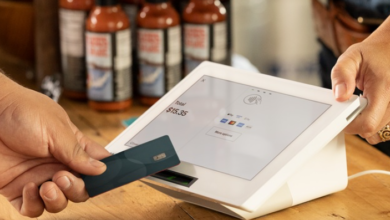The Evolution of Smartphones: From Basic Phones to Smart Devices

Introduction
Smartphones have revolutionized how we communicate, work, entertain, and live our lives. What started as basic mobile phones used primarily for calls and texts has transformed into powerful, multifunctional devices that play a central role in nearly every aspect of modern society. In this article, we will explore the evolution of smartphones, highlighting the key technological advancements that have made them the indispensable devices they are today.
The Birth of Mobile Phones: The 1980s and 1990s
The concept of mobile phones dates back to the early 20th century, but it wasn’t until the 1980s that mobile phones began to emerge as a practical solution for personal communication. The first handheld mobile phone, the Motorola DynaTAC 8000X, was introduced in 1983. It was a bulky device, weighing 2.5 pounds and offering a mere 30 minutes of talk time, but it marked the beginning of the mobile phone revolution.
By the 1990s, mobile phones became more compact and accessible to the general public. These early mobile phones were primarily used for voice calls, and features like text messaging (SMS) were introduced. However, these devices were still quite limited in their capabilities compared to today’s smartphones. The Nokia 3310, released in 2000, became one of the most iconic phones of this era, offering reliability, long battery life, and simple games like Snake.
The Advent of Smartphones: Early 2000s
The early 2000s marked the beginning of the smartphone era. The term “smartphone” refers to a mobile phone that combines cellular functionality with the features of a personal computer, such as the ability to browse the internet, run apps, and store data. The first widely recognized smartphone was the BlackBerry 850, released in 1999, which featured an email function and a QWERTY keyboard. It became particularly popular with business professionals for its email capabilities.
However, the real turning point came in 2007 when Apple introduced the iPhone. The iPhone was revolutionary because it combined a phone, an iPod, and an internet-enabled device in a single, user-friendly package. It featured a touch-screen interface, a significant departure from the physical keyboards of previous devices, and introduced the concept of the App Store, allowing users to download third-party applications to enhance their devices’ functionality.
See also: Blockchain Technology: Beyond Cryptocurrencies
The Rise of App Ecosystems and Mobile Operating Systems
Following the launch of the iPhone, other companies quickly followed suit. Android, developed by Google, was introduced in 2008 and became the main competitor to Apple’s iOS. Android provided an open-source platform for manufacturers, allowing a wide range of devices to run the operating system, including phones from companies like Samsung, HTC, and LG.
The app ecosystems of both iOS and Android began to grow rapidly, transforming smartphones into portable, multifunctional devices. With access to millions of apps for gaming, productivity, entertainment, and more, smartphones became an essential tool for work and play. Mobile operating systems evolved to support these apps with faster processors, more memory, and enhanced user interfaces.
The Introduction of Touchscreen Displays
The shift from physical keyboards to touchscreen interfaces was one of the most significant changes in the smartphone world. The introduction of capacitive touchscreens in the early 2010s allowed users to interact with their devices more intuitively, using gestures like pinch-to-zoom and swiping. The iPhone’s success sparked widespread adoption of touchscreens, and today, nearly all smartphones feature this technology.
Touchscreens also paved the way for other innovations, such as facial recognition and biometric sensors, enabling smartphones to become more personalized and secure. For example, Face ID technology introduced by Apple in 2017 allowed users to unlock their phones using their face, a feature that has since been adopted by various manufacturers.
The Evolution of Hardware and Performance
Over the years, smartphone hardware has improved exponentially. Early smartphones had small processors with limited computing power, but modern devices are equipped with powerful chips capable of handling complex tasks, such as gaming, 3D rendering, and real-time AI processing. Companies like Apple, Qualcomm, and Samsung have been at the forefront of creating mobile processors that rival those found in personal computers.
In addition to processing power, smartphone displays have also come a long way. Early models featured small, low-resolution screens, but today’s flagship phones boast high-definition OLED and AMOLED displays with vibrant colors and sharp clarity. 5G technology is another significant hardware advancement, enabling faster internet speeds, lower latency, and more reliable connections, further enhancing the capabilities of modern smartphones.
The Integration of AI and Machine Learning
One of the most exciting recent advancements in smartphone technology is the integration of artificial intelligence (AI) and machine learning. AI is now embedded in smartphones in several key areas, including camera systems, virtual assistants, and predictive text. AI-powered cameras can automatically optimize settings for different environments, such as low light or portrait mode, to ensure the best possible photos.
Virtual assistants like Siri, Google Assistant, and Amazon Alexa use AI to understand voice commands and perform tasks like setting reminders, playing music, or sending messages. Machine learning algorithms also power smart features like battery optimization, where the phone learns a user’s behavior to provide longer battery life and more efficient performance.
Foldable and Flexible Smartphones: The Next Frontier
As technology continues to advance, foldable and flexible smartphones are emerging as the next big trend. These devices feature foldable screens that allow them to transform from a compact phone to a larger tablet-like screen. Samsung’s Galaxy Z Fold and Huawei’s Mate X are examples of early foldable smartphones that showcase the potential of this technology. Foldable phones have the ability to deliver larger screens without compromising portability, and while they are still relatively new, they represent a glimpse into the future of mobile devices.
As a daily necessity, mobile phones bring us countless conveniences. In order to carry it with you conveniently, you may need a custom phone holder keyring. It’s not only a portable support tool, but also prevents your phone from slipping.
A cleverly designed stand keychain can provide stable support at all times, instantly transforming your phone into a mini theater or office terminal. You can also customize patterns, engrave text, or choose unique materials to suit your taste. Custom Personalised Keyrings are quick to order and ship quickly. This small accessory not only solves the problem of phone support but also transforms a phone case into a fashionable accessory.
The Role of Smartphones in the Internet of Things (IoT)
Smartphones are also playing a central role in the Internet of Things (IoT), which refers to the network of connected devices that can communicate and interact with each other. Modern smartphones can serve as hubs for IoT devices, allowing users to control smart home products like lights, thermostats, security cameras, and appliances from a single app. Additionally, smartphones can connect with wearable devices, such as fitness trackers and smartwatches, to collect and monitor health data in real-time.
Smartphone Trends in the Future
Looking ahead, we can expect continued innovations in the smartphone industry. Some trends to watch for include:
Increased integration of AR and VR: Augmented and virtual reality technologies are likely to become more prevalent in smartphones, allowing for immersive experiences in gaming, education, and entertainment.
Improved battery life: As smartphone hardware becomes more powerful, battery life will continue to improve, with advancements in energy-efficient processors and faster charging technologies.
Better privacy and security features: With the increasing importance of data privacy, smartphones will likely feature more advanced encryption and security measures, such as advanced biometrics and decentralized authentication.
Conclusion
The evolution of smartphones from simple mobile phones to powerful, multi-functional devices has been nothing short of extraordinary. Each innovation, from touchscreens to AI integration, has brought smartphones closer to becoming indispensable tools in our daily lives. As technology continues to advance, it’s clear that the smartphone will continue to evolve, offering even more features, enhanced performance, and greater connectivity, shaping the future of communication and technology.






